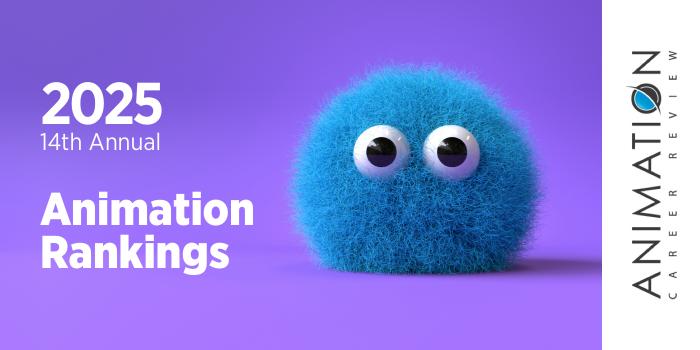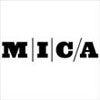
Start your career as a 2D animator for film, TV and games! CG Spectrum’s offers specialized online career training and mentorship from expert animators working at top studios. Get access to career services and a supportive community. Learn more.

| Ranking | School | City |
|---|---|---|
| 1 | Maryland Institute College of Art | Baltimore |
| 2 | University of Maryland Baltimore County | Baltimore |
| 3 | Towson University | Towson |
| 4 | Bowie State University | Bowie |
| 5 | Morgan State University | Baltimore |
Our 2025 ranking -our fourteenth annual- of the top animation school programs in Maryland. For an explanation of the ranking criteria, click here.

Maryland Institute College of Art (MICA) is accredited by the National Association of Schools of Art and Design (NASAD). The school provides both degree programs and non-credit options for artists of all kinds. Degree programs at MICA require participation in the school’s First Year Experience (FYE). During this exploratory year, students can collaborate; study contemporary art and design practice; and participate in critiques.
The rigorous FYE curriculum also highlights skill-building activities, technology, and 2D, 3D, and 4D media studies. Upon completion of the MICA FYE, students will move on to their chosen major. Animation is one of MICA’s top majors. Students in other majors may minor in Animation. This 15 credit-hour program requires The Principles of Animation and Digital Tools for Animation. Students may select other courses from the following: Storyboarding for Animation; Stop-Motion Animation; Introduction to 3D Animation; and Animation Pre-Production. A final project is also part of the program.
Animation majors will be admitted to MICA’s Animation Department. Leading to a BFA, the 120 credit-hour Animation program requires 90 credit hours in the major. This means, students will spend much of the program studying animation and creating animated works.
Course examples for the program include The Principles of Animation; Digital Tools for Animation; History of Animation; Stop-Motion Animation; Introduction to 3D Animation; 2D Character Animation; 3D Character Rigging; Animation Pre-Production; and 3D Animation Performance.
The MICA Animation BFA program culminates with a year-long capstone/thesis. This may include a film, installation, or interactive media project. Final projects are presented at the MICA Grad Show, which consists of exhibitions and events that highlight final projects for all students across the school’s 14 MA and MFA programs.
Graduates of the Animation BFA program at Maryland Institute College of Art are to pursue roles in areas such as entertainment, games, and advertising. They have been hired at major studios such as DreamWorks, Disney, MTV, and LAIKA. Some MICA alumni have also gone on to launch their own studios or freelance businesses, while others go on to pursue graduate studies at MICA and other top art and design schools.
Maryland Institute College of Art is the oldest independent, continuously degree-granting college of art and design in the U.S. Serving 2,090 students from 45 states and 53 foreign countries, MICA provides more than 20 different art and design programs leading to a BFA, MA, MFA, MBA, MPS degree, or post-baccalaureate certificate. In addition to NASAD-accreditation, Maryland Institute College of Art is accredited by the Middle States Commission on Higher Education (MSCHE).

University of Maryland Baltimore County (UMBC) was designated a Carnegie R1 institution in February 2022. Also a STEM school, UMBC’s key research areas include Health and Life Sciences; Civic Engagement; Environmental Sciences; Data Sciences and National Security; and Public Humanities and the Arts.
Within the school’s College of Arts, Humanities, and Social Sciences (CAHSS) are programs that focus on Media and Communication; Ancient Studies; Psychology; American Studies; Economics; Asian Studies; and the Visual Arts. Across areas, students have many opportunities for research, internships, creative work, and additional extracurricular activities.
Visual Arts students have interned at places such as the Smithsonian, Stanley Black & Decker, Baltimore Orioles, Image Factory DC, Mindgrub Technologies, Maryland Art Place, Office of Promotion of the Arts, Maryland Public Television, Renegade Productions, and Creative Alliance.
The CAHSS Department of Visual Arts provides collaborative and interdisciplinary programs leading to a BA, BFA or MFA. Options for aspiring animators include the BA and BFA in Visual Arts. Students in the BA program may focus in animation through electives. The Visual Arts BA curriculum also explores animation, film, interactive forms, video, graphic design, photography, and print media. The BFA program has an official Animation concentration consisting of 45 credit hours.
Students in both programs will complete core courses such as Introduction to Art and Media Studies; Visual Concepts I; Visual Concepts II Camera Vision; Visual Concepts III Three Dimensional Form, Space, and Interaction; Visual Concepts IV Time-Based Media; Studies in Visual Culture; and Drawing I/Beginning Drawing. Students in both programs will also take Introduction to Animation and History of Animation.
Course examples for the Animation concentration include Writing for Media Arts; Real Time Animation; Motion Graphics and Compositing; Animation in the Physical World; Sound Design; and Advanced 3D Animation. Visual Arts BFA students will also complete nine credits of electives, including courses such as Installation Art; Topics in Animation and Interactive Art; and Team-Based Game Development. BA students have access to these and many other animation-related courses.
In addition to a variety of in-demand course options, the Visual Arts program at UMBC provides the opportunity to gain additional work experience through the ART 496 – Imaging Research Center Internship (IRC). In collaborative teams, students will work on animation, graphics, and multimedia productions in a professional work environment for real clients and researchers under the guidance of IRC directors.
In the final year of the Visual Arts BA and BFA programs at UMBC, students will complete a final project to be exhibited (along with other industry-ready works) at the Senior Exit Exhibition. The event is held at the Center for Art, Design and Visual Culture, where Awards for Excellence are presented at an opening reception.
Graduates of the Visual Arts BA and BFA programs at University of Maryland Baltimore County are prepared to pursue careers in the entertainment industry, game design and development, advertising, web design, architecture, science and medicine, government, research, and education. Some program alumni also go on to launch their own studios or pursue graduate studies at UMBC or other major universities.
University of Maryland Baltimore County was established as a member of the University System of Maryland in 1966. The school serves approximately 13,905 students enrolled in more than 100 majors, minors, and certificate programs across seven colleges and schools. The University of Maryland Baltimore County is accredited by the Middle States Commission on Higher Education (MSCHE).

Towson University (TU) is home to the College of Fine Arts and Communication (COFAC). Established in 1982, the school serves approximately 2,900 students enrolled in more than 30 majors and minors, making it one of the largest colleges at TU and Maryland’s art center. Programs are accredited by the National Association of Schools of Music (NASM), the National Association of Schools of Dance (NASD), and the National Association of Schools of Theatre (NAST).
COFAC houses seven departments including Art + Design, Art History, and Art Education; Mass Communication; Electronic Media and Film; Communication Studies; Music; Theatre Arts; and Dance. Across departments and programs, COFAC students have access to state-of-the-art production facilities, labs and studios; immersive workshops; internship opportunities; study abroad experiences; and the Center for the Arts Gallery.
The COFAC Department of Art at Towson University houses an Art and Design BFA program with a Digital Art and Design concentration. Students must also select a specialization within the 60-unit concentration. Options include Animation; Digital Arts; and Experimental. Each specialization consists of four courses (12 units). The Animation specialization requires Animation 2D; Animation 3D; Photo Imaging – Motion; and Animation Studio.
Students in all specializations will take Photo Imaging – Film or Photo Imaging – Creative Workflow; Visual Concepts; History of Modern Design; Digital Art – Experimental; Survey of Global Art I-II; Digital Tools and Concepts; and History of New Media. All students will also complete the Directed Studio for BFA course (BFA Project), which culminates in a presentation of work.
Graduates of the Art and Design BFA program at Towson University are prepared to pursue careers in animation, game art and design, multimedia, television production, advertising, fine art, illustration, graphic design, architecture, medical animation, visualization, animation research, and art education.
Some top employers for Towson University alumni include Amazon, Target, Northrop Grumman, Booz Allen Hamilton, TEKsystems, Starbucks, Tech USA, GBMC, Enterprise, and the Baltimore Ravens.
Towson University serves approximately 19,040 students, making it the largest university in the Baltimore area and the second-largest in the University System of Maryland. Founded as the Maryland Normal School in 1866, TU provides more than 110 undergraduate majors, concentrations, and tracks; 45+ master’s degree programs; seven doctoral programs; and over 35 graduate certificates across seven colleges and dozens of departments. Towson University is accredited by the Middle States Commission on Higher Education (MSCHE).

The College of Arts and Sciences at Bowie State University (BSU or Bowie State) houses the Department of Fine and Performing Arts (DFPA). Within the department is the Visual Communication and Digital Media Arts (VCDMA) program that combines technology, design, and the media. All DFPA VCDMA students will work and learn in the Fine and Performing Arts Center (FPAC), which houses spaces such as Studio Ayoka Chenzira—a stop-motion animation studio powered by LAIKA Studios; digital media labs; and a multimedia recording studio.
Other spaces and equipment include a video editing, compositing, motion capture, XR, VFX suite powered by Adobe known as MOCAVI-XR; visual arts and design studios for painting, photography, and more; and a digital music production lab.
The VCDMA program at Bowie State also houses an Animation and Motion Graphics concentration that requires 120-122 credit hours of study. Leading to a BS, the program focuses primarily on animation as well as time-based art, sequential art, motion graphics, and production. Courses for the program are supplemented with professional internships, portfolio reviews, and trips to exhibitions and screenings.
Course examples include Introduction to Computer Graphics; Visual Communications; History of Animation; Introduction to Film; Advertising; 2D Design; Screenwriting; 2D Digital Animation I: Animation and Motion Graphics; 2D Digital Animation II: Advanced Animation and Motion; Stop-Motion and Experimental Animation; 3D Modeling and Animation I-II; and Multimedia Workshop-Web Design and Digital Media.
All Animation and Motion Graphics students have the opportunity to participate in the Department of Computer Science’s Computational Perception and Animation Lab (CPAL). Research explores computer animation, simulation, computer graphics, human-computer interaction (HCI), and video image processing.
The VCDMA Animation and Motion Graphics BS at Bowie State University culminates with the Senior Thesis and Exhibition course, which includes a formal display of the student’s artwork in the Gallery of Fine Art in the FPAC. Graduates are prepared to pursue positions in areas such as 2D and 3D animation, visual effects (VFX), game art and design, television production, special effects (SFX), illustration, new media, advertising, simulations, visualization, research, education, medical, legal, and science.
Bowie State graduates have been hired at places such as Google, Microsoft, Amazon, Lockheed Martin, Booz Allen Hamilton, IBM, the Department of Defense, and the U.S. Naval Research Laboratories.
Founded in 1865, Bowie State University is Maryland’s oldest Historically Black College or University (HBCU). The school is also one of the nation’s top 15 oldest HBCU’s. A member institution of the University System of Maryland, Bowie State serves approximately 6,355 students enrolled in 29 undergraduate majors, 20 master’s degrees, 16 post-bachelor’s certificates, and three doctoral programs.
Programs at Bowie State are housed in the College of Arts and Sciences; the College of Business; the College of Education; and the College of Professional Studies. Bowie State University is accredited by the Middle States Commission on Higher Education (MSCHE).

Morgan State University is home to the College of Liberal Arts (CLA). Within the CLA is the Department of English and Language Arts, which houses a number of programs leading to a BA, BFA, MA, or PhD. At the undergraduate level, the department provides BA and BFA degrees in Screenwriting and Animation (SWAN); and a Film and Digital Storytelling.
BA and BFA students may concentrate in Computer Animation; Film and Television Writing; or Integrated Media Writing (Screenwriting and Animation). Minor students have three track options including Cinematic Studies; Film and Digital Storytelling; and Screenwriting (Film and Television Writing). Consisting of 18 credit hours, all tracks provide the opportunity to study animation through core requirements, hands-on projects (including a final project), seminars, and an internship.
All SWAN BA and BFA concentrations explore areas such as computer animation; game art and design; film; immersive storytelling; screenwriting; and independent filmmaking. Each concentration consists of eight required courses and 12 elective credits. All students will take gateway and core courses such as Introduction to Film and Digital Storytelling; Animation Workshop; Introduction to Computer Science I-II; Art and Motion; Filmmaking I; Introduction to Screenwriting; Fundamentals of Film and TV Writing (Narrative); and Introduction to Cinematic Storytelling (Theory/Form).
Students may also choose one course from options such as History of Animation; World Cinema; Art and History of the Graphic Comic; and History of American Movies. Some common (required) concentration courses include Animation Workshop II; Cinematography; Filmmaking II; Advanced Screenwriting; and Film and Digital Storytelling Internship.
The SWAN program at Morgan State University culminates with a final project completed across two courses: Senior Studio Projects I-II. Graduates are prepared to pursue positions in areas such as animated filmmaking, television production, live-action filmmaking, game art and design, and advertising. Some graduates go on to pursue graduate studies or launch their own studios and freelance businesses.
Morgan State University was founded in 1867. The school is an R2 Carnegie-classified doctoral research institution that serves approximately 10,740 students. Programs include more than 100 majors and degrees housed across 11 colleges and schools. Morgan State University is accredited by the Middle States Commission on Higher Education (MSCHE).